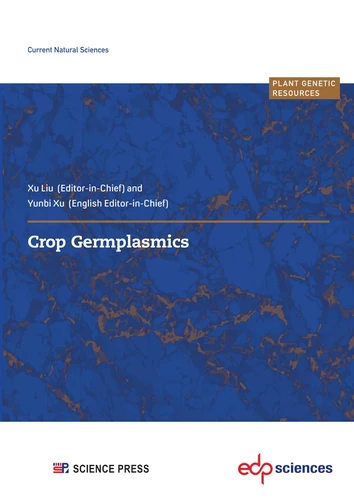Crop Germplasmics
Par : ,Formats :
Disponible dans votre compte client Decitre ou Furet du Nord dès validation de votre commande. Le format PDF est :
- Compatible avec une lecture sur My Vivlio (smartphone, tablette, ordinateur)
- Compatible avec une lecture sur liseuses Vivlio
- Pour les liseuses autres que Vivlio, vous devez utiliser le logiciel Adobe Digital Edition. Non compatible avec la lecture sur les liseuses Kindle, Remarkable et Sony
 , qui est-ce ?
, qui est-ce ?Notre partenaire de plateforme de lecture numérique où vous retrouverez l'ensemble de vos ebooks gratuitement
Pour en savoir plus sur nos ebooks, consultez notre aide en ligne ici
- Nombre de pages556
- FormatPDF
- ISBN978-2-7598-3744-1
- EAN9782759837441
- Date de parution01/05/2025
- Protection num.Digital Watermarking
- Taille39 Mo
- Infos supplémentairespdf
- ÉditeurEDP Sciences
Résumé
Crop germplasmics is a scientific field dedicated to the study of diversity of crops and their wild relatives, as well as its utilization. It encompasses theories, technologies, and management systems involved in the formation, conservation, research, and utilization of crop diversity. This book introduces the theoretical and technical frameworks of crop germplasmics, providing a comprehensive overview of the discipline.
The book begins with an Introduction that outlines the main themes, followed by a detailed exploration of fundamental theories. Subsequent chapters delve into specific theories, technical methods, and significant advancements within the workflow of germplasm. Topics covered include investigation and collection, safe conservation, phenotypic evaluation, genotyping and gene mining, germplasm enhancement, multi-omics research, big data construction, sharing and utilization, value assessment, property rights protection, and efficient management.
The book emphasizes a seamless integration of academic rigor and accessibility, reflecting the cutting-edge and forward-looking nature of the discipline's development. It serves as a valuable reference for professionals working with germplasm, as well as for postgraduate teaching, crop genetics and breeding, and basic research.
The book begins with an Introduction that outlines the main themes, followed by a detailed exploration of fundamental theories. Subsequent chapters delve into specific theories, technical methods, and significant advancements within the workflow of germplasm. Topics covered include investigation and collection, safe conservation, phenotypic evaluation, genotyping and gene mining, germplasm enhancement, multi-omics research, big data construction, sharing and utilization, value assessment, property rights protection, and efficient management.
The book emphasizes a seamless integration of academic rigor and accessibility, reflecting the cutting-edge and forward-looking nature of the discipline's development. It serves as a valuable reference for professionals working with germplasm, as well as for postgraduate teaching, crop genetics and breeding, and basic research.
Crop germplasmics is a scientific field dedicated to the study of diversity of crops and their wild relatives, as well as its utilization. It encompasses theories, technologies, and management systems involved in the formation, conservation, research, and utilization of crop diversity. This book introduces the theoretical and technical frameworks of crop germplasmics, providing a comprehensive overview of the discipline.
The book begins with an Introduction that outlines the main themes, followed by a detailed exploration of fundamental theories. Subsequent chapters delve into specific theories, technical methods, and significant advancements within the workflow of germplasm. Topics covered include investigation and collection, safe conservation, phenotypic evaluation, genotyping and gene mining, germplasm enhancement, multi-omics research, big data construction, sharing and utilization, value assessment, property rights protection, and efficient management.
The book emphasizes a seamless integration of academic rigor and accessibility, reflecting the cutting-edge and forward-looking nature of the discipline's development. It serves as a valuable reference for professionals working with germplasm, as well as for postgraduate teaching, crop genetics and breeding, and basic research.
The book begins with an Introduction that outlines the main themes, followed by a detailed exploration of fundamental theories. Subsequent chapters delve into specific theories, technical methods, and significant advancements within the workflow of germplasm. Topics covered include investigation and collection, safe conservation, phenotypic evaluation, genotyping and gene mining, germplasm enhancement, multi-omics research, big data construction, sharing and utilization, value assessment, property rights protection, and efficient management.
The book emphasizes a seamless integration of academic rigor and accessibility, reflecting the cutting-edge and forward-looking nature of the discipline's development. It serves as a valuable reference for professionals working with germplasm, as well as for postgraduate teaching, crop genetics and breeding, and basic research.



